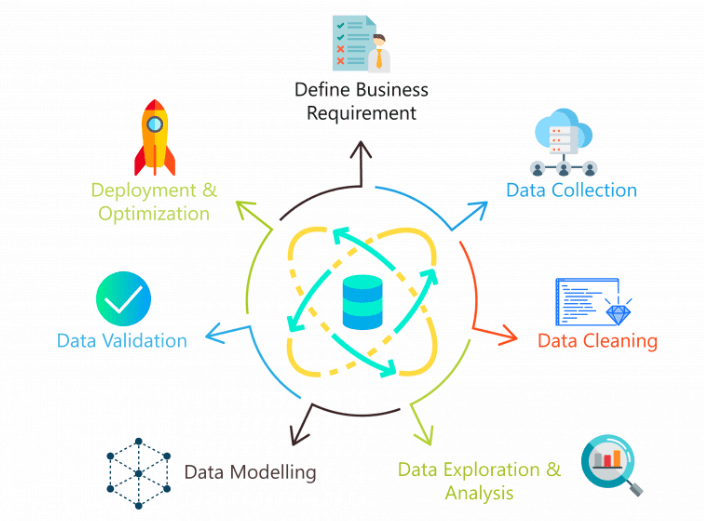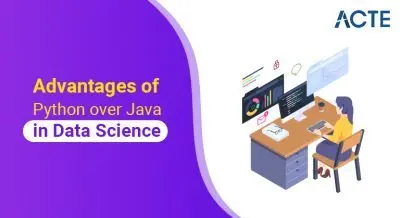
- Beginner-Level Projects
- Intermediate-Level Projects
- Advanced-Level Projects
- Data Cleaning Projects
- Data Visualization Projects
- Machine Learning Model Building
- Deep Learning Applications
- Natural Language Processing Projects
Beginner-Level Projects
For beginners stepping into the world of data science, starting with simple projects is crucial to build a strong foundation. Beginner-level projects typically focus on fundamental skills such as data collection, cleaning, visualization, and basic predictive modeling. These projects help learners understand how to handle real-world data and develop essential problem-solving techniques. Popular beginner projects include analyzing the Titanic dataset to explore survival factors, predicting house prices using basic regression models, and performing customer segmentation based on demographic data. TThese tasks, part of Data Science Training, introduce key concepts like data preprocessing, feature selection, and exploratory data analysis in a manageable context. Many beginners turn to platforms like Kaggle to access open datasets and practice implementing simple algorithms such as linear regression, logistic regression, and k-means clustering. Working on these projects provides hands-on experience in understanding relationships between variables and how to apply machine learning models to make predictions or group data effectively. Overall, beginner data science projects teach foundational skills that are vital for progressing to more complex tasks. They enable learners to become comfortable with dataset handling, basic statistical analysis, and starting to make data-driven decisions, setting the stage for deeper exploration in the field.
Are You Interested in Learning More About Data Science? Sign Up For Our Data Science Course Training Today!
Intermediate-Level Projects
Once learners have a solid grasp of the fundamentals, intermediate data science projects challenge them to work with larger datasets, tackle more complex problems, and engage in deeper model optimization. These projects require enhanced skills in data wrangling, feature engineering, and advanced model tuning, helping learners build more robust and accurate predictive systems, reflecting A Day in the Life of a Data Scientist. Common intermediate-level projects include building recommendation systems that suggest products or content based on user behavior, performing sentiment analysis on Twitter or social media data to gauge public opinion, and developing credit risk models for financial institutions to assess loan applicant reliability. These tasks demand a stronger understanding of data preprocessing and domain knowledge to extract meaningful features that improve model performance. At this stage, machine learning techniques like Random Forest, Support Vector Machines (SVM), and ensemble learning methods such as Gradient Boosting become more prominent.

Learners also dive into hyperparameter tuning, adjusting model settings to optimize accuracy and learn to address challenges like overfitting and underfitting, which affect model generalization. Intermediate projects are critical for developing the ability to not only build models but also evaluate and refine them effectively. This phase strengthens the learner’s skills in producing reliable, well-validated solutions, preparing them for more advanced, real-world data science challenges.
Advanced-Level Projects
- Advanced Feature Engineering: Creating intricate features, including embeddings or time-series features, to improve model accuracy and extract deeper insights.
- Explainability and Ethics: Projects emphasize model interpretability, fairness, and addressing ethical concerns such as bias mitigation and privacy preservation.
- Deep Learning and Neural Networks: These projects involve designing and training deep neural networks such as CNNs, RNNs, Transformers, or GANs for tasks like image generation, natural language understanding, and speech recognition.
- Big Data Handling: Advanced projects in Top Data Science Programming Languages require working with massive datasets using distributed computing frameworks like Apache Spark or Hadoop to process and analyze data efficiently.
- Model Optimization and Deployment: Involves advanced hyperparameter tuning, model compression, and deploying models into production environments with tools like Docker, Kubernetes, or cloud services.
- Research and Innovation: These projects often involve cutting-edge techniques, publishing findings, or developing new algorithms, pushing the boundaries of what data science can achieve.
- Complex Problem Solving: Advanced projects tackle highly complex, real-world problems such as autonomous driving, fraud detection, or disease diagnosis. They require integrating multiple data sources and handling diverse data types like images, text, and sensor data.
- Handling Missing Data: Identifying and addressing missing values through techniques like imputation, deletion, or using algorithms that handle gaps effectively.
- Removing Duplicates: Detecting and eliminating duplicate records as part of Data Science Training to ensure data accuracy and consistency.
- Correcting Data Types: Converting data into appropriate types (e.g., strings to dates or numbers) to enable proper analysis and model building.
- Dealing with Outliers: Identifying outliers that can skew results and deciding whether to remove, transform, or keep them based on the context.
- Standardizing Formats: Ensuring consistent formatting for dates, phone numbers, categorical values, and text data to improve data uniformity.
- Addressing Inconsistent Data: Fixing typos, misspellings, and inconsistencies in categorical data to prevent errors during analysis.
- Validating Data Quality: Applying checks for data accuracy, completeness, and validity, including cross-referencing with external sources if available.
- Problem Definition: Clearly understanding and defining the problem is the first and most critical step. It involves identifying the goal whether it’s classification, regression, clustering, or recommendation.
- Data Collection: Gathering relevant and sufficient data from appropriate sources (databases, APIs, web scraping, etc.) is essential, as the quality and quantity of data directly affect model performance.
- Data Preprocessing: This step includes cleaning data, handling missing values, encoding categorical variables, scaling features, and splitting the dataset into training and testing sets to prepare it for modeling.
- Feature Engineering: Creating meaningful input features enhances model performance, a key aspect in Big Data vs Data Science.
- Model Selection: Choosing the appropriate algorithm based on the problem type and dataset characteristics e.g., Linear Regression, Decision Trees, Random Forests, or Neural Networks.
- Model Training and Tuning: Training the model on the training data and optimizing its performance through techniques like cross-validation, grid search, and hyperparameter tuning.
- Evaluation and Validation: Assessing model performance using suitable metrics (e.g., accuracy, precision, recall, RMSE) and validating it on test data to ensure generalizability and avoid overfitting.
To Explore Data Science in Depth, Check Out Our Comprehensive Data Science Course Training To Gain Insights From Our Experts!
Data Cleaning Projects

Data Visualization Projects
Data visualization is a vital skill in data science, as it transforms complex data into clear, compelling visual stories. Visualization projects typically involve analyzing datasets and presenting key trends, patterns, and insights through graphs, charts, and interactive dashboards. These visual tools help both technical and non-technical audiences quickly grasp important information and make data-driven decisions. Common example projects in Python Career Opportunities include visualizing the spread of COVID-19, analyzing stock market trends, and displaying demographic changes across countries. Each of these projects demonstrates how visualization can clarify complex phenomena and support strategic decision-making. Popular visualization tools and libraries include Matplotlib and Seaborn for static charts, Plotly for interactive and web-based visuals, and Tableau for creating sophisticated dashboards without extensive coding. These tools enable data scientists to craft engaging, insightful visuals that highlight significant data points and trends effectively. By working on visualization projects, data scientists refine their ability not only to uncover stories hidden within data but also to communicate those stories in an impactful way. This skill is especially crucial in roles where business communication and data storytelling are essential to influencing strategy and driving organizational success.
Want to Pursue a Data Science Master’s Degree? Enroll For Data Science Masters Course Today!
Machine Learning Model Building
Deep Learning Applications
Deep learning is a specialized branch of machine learning that models the human brain’s ability to learn from large volumes of data. It uses artificial neural networks with multiple layers hence the term “deep” to automatically learn features and patterns from raw input. Deep learning projects are widely applied in fields such as image recognition, object detection, natural language translation, and even complex game playing, exemplified by systems like AlphaGo. Developing a deep learning application often involves tasks like creating a facial recognition system using Convolutional Neural Networks (CNNs) or simulating self-driving car environments that can learn to navigate autonomously, highlighting key differences in Machine Learning Vs Deep Learning. These projects require both theoretical knowledge and practical skills. Foundational understanding of linear algebra, calculus, and probability is essential, as these mathematical concepts underpin neural network operations and optimization techniques. Popular deep learning frameworks like TensorFlow, PyTorch, and Keras provide flexible tools to design, train, and deploy models efficiently. Additionally, deep learning models demand substantial computational power, often relying on GPUs to accelerate training times due to the large size of data and model complexity. Successfully completing deep learning projects demonstrates proficiency in one of the most advanced and rapidly evolving areas of data science, highlighting the ability to tackle complex, real-world problems through cutting-edge technology.
Are You Preparing for Data Science Jobs? Check Out ACTE’s Data Science Interview Questions & Answer to Boost Your Preparation!
Natural Language Processing Projects
Natural Language Processing (NLP) is a branch of artificial intelligence that focuses on enabling machines to understand, interpret, and generate human language. It bridges the gap between human communication and computer understanding by processing unstructured text data. NLP projects can vary widely, including building chatbots that simulate human conversation, performing document classification to categorize text into predefined labels, conducting sentiment analysis to determine the emotional tone behind texts, or creating language translators that convert text from one language to another. To develop these applications, diverse datasets are commonly used, such as movie reviews, social media posts, and customer feedback, during Data Science Training. These sources provide rich, real-world language examples that help train and evaluate NLP models. Popular libraries like NLTK (Natural Language Toolkit), spaCy, and Hugging Face’s Transformers offer powerful tools and pre-trained models, simplifying tasks like tokenization, parsing, entity recognition, and language modeling. Working with NLP projects is essential in today’s data-driven world because a large portion of business data is unstructured text emails, documents, reviews, and more. Extracting meaningful insights from this data can enhance decision-making, customer service, and automation. Ultimately, NLP projects showcase the practical ability to process and leverage textual information, making them highly valuable across industries.





